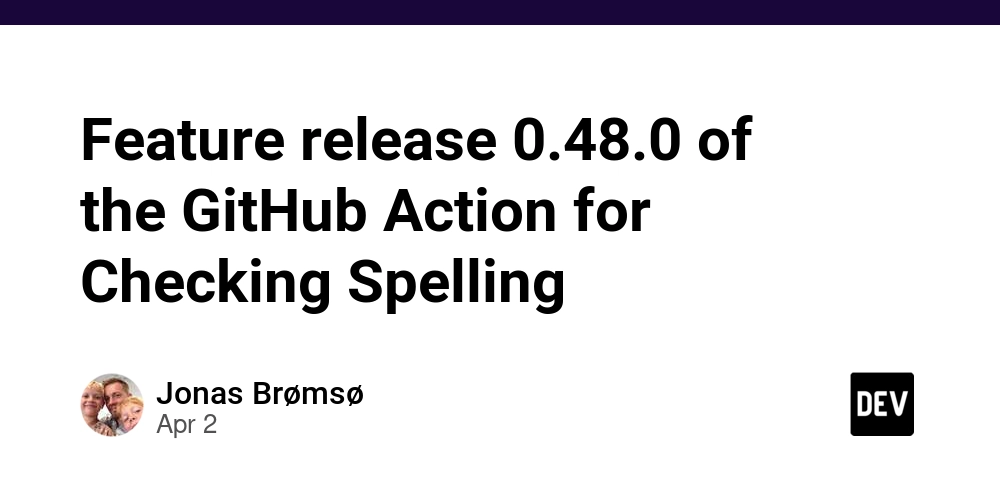Top 30 Best Penetration Testing Tools – 2025
Penetration testing, also known as ethical hacking, is a critical process in cybersecurity aimed at identifying and addressing vulnerabilities within systems, networks, and applications. By simulating real-world attacks, penetration testing helps organizations uncover weaknesses before malicious actors can exploit them. To execute these tests effectively, cybersecurity professionals rely on specialized tools designed to assess and […] The post Top 30 Best Penetration Testing Tools – 2025 appeared first on Cyber Security News.

Penetration testing, also known as ethical hacking, is a critical process in cybersecurity aimed at identifying and addressing vulnerabilities within systems, networks, and applications.
By simulating real-world attacks, penetration testing helps organizations uncover weaknesses before malicious actors can exploit them. To execute these tests effectively, cybersecurity professionals rely on specialized tools designed to assess and exploit potential vulnerabilities.
These penetration testing tools range from network scanners and vulnerability detectors to password crackers and web application security frameworks.
They play a vital role in enhancing cybersecurity by automating tasks, providing detailed insights, and enabling testers to simulate various attack scenarios. Tools like Burp Suite, Nmap, Metasploit, Wireshark, and OWASP ZAP are widely recognized for their effectiveness in identifying security gaps across different environments, including web applications, cloud platforms, and internal networks.
The choice of the best penetration testing tool often depends on specific requirements such as the type of system being tested, the depth of analysis needed, and the tester’s level of expertise.
Here Are Our Picks For The Best Penetration Testing Tools And Their Feature
- Metasploit: Exploitation framework for discovering and testing vulnerabilities with a vast library of exploits.
- NMAP/ZenMap: Network scanning tool for discovering hosts, services, and open ports in a network.
- Wireshark: Network protocol analyzer for capturing and inspecting packets in real-time.
- BurpSuite: Web vulnerability scanner and proxy tool for analyzing and securing web applications.
- Pentest Tools: Collection of tools for various penetration testing tasks, including vulnerability scanning and exploitation.
- Intruder: Cloud-based vulnerability scanner that identifies security weaknesses and provides actionable insights.
- Nessus: Comprehensive vulnerability assessment tool for scanning and identifying security flaws across various systems.
- Zed Attack Proxy (ZAP): Open-source web application security scanner for finding and fixing vulnerabilities.
- Nikto: Web server scanner that detects vulnerabilities and misconfigurations in web servers.
- BeEF: Browser Exploitation Framework for testing and exploiting vulnerabilities in web browsers.
- Invicti: Automated web application security scanner with advanced vulnerability detection and risk assessment features.
- Powershell-Suite: Collection of PowerShell scripts for performing various penetration testing and security tasks.
- w3af: Web application attack and audit framework for finding and exploiting web application vulnerabilities.
- Wapiti: Web application vulnerability scanner that identifies potential security issues in web applications.
- Radare: Open-source reverse engineering framework for analyzing binaries and discovering security issues.
- IDA: Interactive DisAssembler for analyzing and reverse engineering executable files.
- Apktool: Tool for reverse engineering Android applications to inspect and modify APK files.
- MobSF: Mobile Security Framework for automated analysis of mobile apps to identify security issues.
- FuzzDB: Database of attack patterns and payloads for fuzz testing and discovering security vulnerabilities.
- Aircrack-ng: Suite of tools for assessing Wi-Fi network security, including cracking WEP and WPA/WPA2 keys.
- Retina: Vulnerability management tool that performs network and application vulnerability assessments.
- Social Engineering Toolkit (SET): Framework for testing social engineering attacks and techniques.
- Hexway: Security platform focusing on threat intelligence and proactive defense strategies.
- Shodan: Search engine for discovering and analyzing internet-connected devices and their security posture.
- Kali Linux: It offers a comprehensive suite of tools for advanced penetration testing and security auditing.
- Dnsdumpster: Online DNS reconnaissance tool for discovering subdomains and mapping network infrastructure.
- Hunter: Email address verification and lead generation tool with a focus on security.
- skrapp: Email finding and lead generation tool for locating and verifying professional email addresses.
- URL Fuzzer: Tool for identifying hidden resources and vulnerabilities by fuzzing URLs.
- sqlmap: Network mapping tool for discovering devices and services in a network.
Penetration Testing Tools Features
| 30 Best Penetration Testing Tools | Key Features | Stand Alone Feature | Free Trial / Demo |
|---|---|---|---|
| 1. Metasploit | 1. Bunch of many tools. 2. Quickly execute tasks. 3. Automatic reporting. | Exploitation framework with payloads | Yes |
| 2. NMAP/ZenMap | 1. OS Detection 2. Target specification 3. Port Scanning 4. Firewall/IDS Evasion and Spoofing 5. Host discovery 6. Scan techniques 7. Script scan 8. Service or version detection 9. Evasion and spoofing | Network discovery and mapping | Yes |
| 3. WireShark | 1. It analyzes network traffic. 2. Inspect network protocol. 3. Troubleshoot network performance problems. 4. Decrypt protocols. 5. Collect real-time data from Ethernet, LAN, USB, etc. | Network protocol analysis and monitoring | Yes |
| 4. BurpSuite | 1. Intercepting browser traffic 2. Break HTTPS 3. Manage recon data 4. Expose hidden attack surface 5. Speed up granular workflows 6. Test for clickjacking attacks 7. Work with WebSockets 8. Assess token strength 9. Manually test for out-of-band vulnerabilities | Web application security testing | Yes |
| 5. Pentest Tools | 1. Find, exploit & report common vulnerabilities 2. Save time for creative hacking 3. Eliminate the cost of multiple scanners 4. offensive security testing 5. network penetration testing 6. Templates for scans, findings, reports, engagements | Comprehensive pen-testing toolkit | Yes |
| 6. Intruder | 1. Ongoing attack surface monitoring 2. Intelligent results 3. Cloud Security. 4. System Security. 5. Application Security. 6. Confidentiality. 7. Data Security. | Cloud-based vulnerability scanner | Yes |
| 7. Nessus | 1. Nessus can check the system for over 65,000 vulnerabilities. 2. Facilitate efficient vulnerability assessment. 3. Nessus is constantly updated with new features to mitigate emerging potential risks. 4. It is compatible with all other tenable products. | Vulnerability assessment and management | Yes |
| 8. Zed Attack Proxy | 1. Compatible with Mac OS X, Linux, and Windows. 2. Capable of identifying a wide range of vulnerabilities in web applications. 3. An interface that is easy to use. 4. Pentesting platform for beginners. 5. Many pentesting activities are supported. | Web application security scanner | Yes |
| 9. Nikto | 1. Identifies 1250 servers running out-of-date software. 2. Fully compatible with the HTTP protocol. 3. Templates can be used to make custom reports. 4. Several server ports scan simultaneously. | Web server vulnerability scanner | Yes |
| 10. BeEF | 1. Solid command-line tool. 2. Fantastic for checking up on any suspicious activity on the network through the browser. 3. Comprehensive threat searches. 4. Good for mobile devices. | Browser exploitation framework | Yes |
| 11. Invicti | 1. Fully automated. 2. Bunch of many tools. 3. System intelligence. 4. Fast scanning. 5. Automatic assessment report. | Web application vulnerability scanner | Yes |
| 12. Powershell-Suite | 1. Powershell-Suite works with macOS, Linux, and Windows. 2. pipeline for command chaining and an in-console help system. 3. Post-exploitation, infrastructure scanning and information gathering, and attacks. | PowerShell-based penetration testing | No |
| 13. w3af | 1. Assembled tools available. 2. Covers everything about known network vulnerabilities. 3. Enables reusing test parameters. | Web application attack and audit framework | Yes |
| 14. Wapiti | 1. Proxy support for HTTP, HTTPS, and SOCKS5. 2. Variations in Verbosity. 3. Modular attack systems that can be activated and deactivated quickly and easily. 4. A Customizable number of concurrent HTTP request processing tasks. 5. A payload can be added as easily as a line. 6. Can provide terminal colors to highlight vulnerabilities. 7. It is a command-line application. | Web application vulnerability scanner | Yes |
| 15. Radare | 1. Multi-architecture and multi-platform. 2. Highly scriptable. 3. Hexadecimal editor. 4. IO is wrapped. 5. Filesystems and debugger support. 6. Examine the source code at the basic block and function levels. | Reverse engineering and analysis | Yes |
| 16. IDA | 1. It has a multi-processor interactive, programmable, extensible disassembler with a graphical interface on Windows and console interfaces on Linux and Mac OS X. 2. Deciphers machine code into assembly language for examination and comprehension. 3. Displays disassembled code graphically to help understand program logic. 4. Compatibility with several architectures and file formats allows software and system analysis. 5. User-friendly debugger integration lets users debug and evaluate code simultaneously. | Disassembler and debugger | Yes |
| 17. Apktool | 1. Decode APK resources. 2. Reformatting the binary APK from the decoded resources. 3. Putting together and taking care of APKs that use framework resources. 4. Using automation for repetitive tasks. | Android APK reverse engineering | Yes |
| 18. MobSF | 1. Information gathering. 2. Analyze security headers. 3. Find vulnerabilities in mobile APIs like XXE, SSRF, Path Traversal, and IDOR. 4. Monitor additional logical issues associated with Session and API. | Mobile security framework | Yes |
| 19. FuzzDB | 1. Attack patterns database 2. Payloads for fuzz testing 3. Vulnerability discovery assistance 4. Security testing for web apps 5. Comprehensive enumeration and scanning | Fuzz testing and attack payloads | No |
| 20. Aircrack-ng | 1. Password cracking 2. Packet sniffing 3. Attacking 4. OS Compatibility | Wireless network security testing | Yes |
| 21. Retina | 1. Multi-tiered architecture 2. Threat analytics dashboard 3. Resource planning 4. Compliance reporting 5. Heat maps | Vulnerability management and assessment | Yes |
| 22. Social Engineering Toolkit | 1. open-source penetration testing framework 2. Phishing Attacks 3. pretexting 4. Tailgating and CEO fraud analysis 5. Web jacking attack 6. Credential Harvester Attack | Social engineering attack simulations | No |
| 23. Hexway | 1. Custom branded docx reports 2. All security data in one place 3. Issues knowledge base 4. Integrations with tools (Nessus, Nmap, Burp, etc.) 5. Checklists & pentest methodologies 6. API (for custom tools) 7. Team collaboration 8. Project dashboards 9. Scan comparisons | Binary analysis and reverse engineering | No |
| 24. Shodan | 1. Cyber security Search engine 2. Network Monitoring 3. Shodan crawls the entire Internet 4. Looking up IP Information 5. Internet routers. 6. Enterprise Security 7. Academic Research 8. Market Research | Internet-connected device search engine | Yes |
| 25. Kali Linux | 1. Extensive collection of security tools 2. Customizable and flexible environment 3. Regular updates with latest exploits 4. Live boot and installation options 5. Community and professional support | Extensive pre-installed security tools. | Yes |
| 26. Dnsdumpster | 1. Actions. Automate any workflow. 2. Security. Find and fix vulnerabilities. 3. Copilot. Write better code with AI. 4. Manage code changes. 5. Issues. Plan and track work. 6. Discussions. Collaborate outside of code. | DNS reconnaissance and mapping | Yes |
| 27. Hunter | 1. Email searches & verifications 2. Link tracking 3. Find emails while surfing the web 4. Searching or verifying lists of email addresses 5. Domain Tracking | Email address and domain finder | Yes |
| 28. Skrapp | 1. Account-Based Marketing. 2. Content Marketing. 3. Conversion Rate Optimization. 4. Customer Data Platform (CDP) 5. Demand Generation. 6. Event Management. | Email and lead extraction | No |
| 29. URL Fuzzer | 1. Fuzz URL set from an input file. 2. Concurrent relative path search. 3. A configurable number of fuzzing workers. 4. Configurable time wait periods between fuzz tests per worker. 5. Custom HTTP headers support. 6. Various HTTP methods support. | URL and parameter fuzzing | No |
| 30. sqlmap | 1. Powerful testing engine. 2. capable of carrying out multiple injection attacks. 3. Supports MySQL, Microsoft Access, IBM DB2, and SQLite servers. 4. Finds and exploits web application SQL injection vulnerabilities. 5. Identifies database management system type and version. | Network scanning and mapping | No |
1. Metasploit

Metasploit is a widely used penetration testing framework that helps security professionals identify system vulnerabilities by providing a comprehensive suite of exploits, payloads, and tools for simulating real-world attacks.
It features a free Community edition and a more advanced Pro version, including additional features like automated exploitation, advanced reporting, and enhanced collaboration capabilities for enterprise environments.
Metasploit integrates with other security tools and platforms, enabling users to streamline their penetration testing workflows and improve overall efficiency in identifying and addressing security vulnerabilities.
What is Good? What Could Be Better? Currently, one of the most widely-used security frameworks If you’re starting, you probably shouldn’t go with Metasploit because it’s geared toward more advanced users. Supported by one of the largest user bases, making it ideal for ongoing maintenance and feature updates A free version and a paid commercial version are both made available. Extremely adaptable and packed with free software
2. NMAP/ZenMap

NMAP is a powerful network scanning tool for discovering network hosts and services. It identifies open ports, running services, and potential security risks, providing detailed insights into network security.
ZenMap is NMAP’s graphical user interface (GUI), designed to simplify its complex command-line operations. It offers an intuitive way to configure scans, view results, and manage scanning profiles for more efficient security assessments.
Both NMAP and ZenMap are free and open-source, making them accessible tools for network administrators and security professionals. They are widely used for network inventory, vulnerability detection, and compliance auditing.
What is Good? What Could Be Better? Open-source software is, therefore, readily accessible and easily verifiable. Utilization requires extensive knowledge. Easy to navigate Limited scanning depth Lots of networking features Utilized by both malicious hackers and security professionals
3. WireShark

Wireshark is a widely used, open-source network protocol analyzer that allows users to capture and inspect network traffic in real-time. It provides deep insights into network protocols and helps identify potential vulnerabilities.
The tool supports various protocols and offers advanced filtering and analysis capabilities, making it ideal for diagnosing network issues, investigating security incidents, and understanding complex network interactions during penetration testing.
Wireshark’s extensive community support and regular updates ensure it stays current with emerging technologies and threats, providing a valuable resource for security professionals seeking to enhance their network analysis and penetration testing efforts.
What is Good? What Could Be Better? Freely available Does not provide alerts in real-time for any intrusions. Real-time network traffic analyzer Capable of information analysis but not transmission.
4. BurpSuite

BurpSuite is a comprehensive penetration testing tool designed for web application security assessment. It provides features for crawling websites, scanning for vulnerabilities, and performing detailed analyses to identify and address potential security issues.
The tool offers both free and professional versions, with the paid edition providing advanced capabilities such as automated vulnerability scanning, enhanced reporting, and a suite of plugins for deeper security testing and customization.
BurpSuite is widely used by security professionals for its intuitive interface and powerful functionality, including a proxy server for intercepting and modifying HTTP/S requests. This makes it a critical tool for discovering and exploiting web application vulnerabilities.
What is Good? What Could Be Better? Comprehensive vulnerability scanning capabilities Improved Performance on Large Scans Advanced manual testing features Enhanced Reporting Customization Options User-friendly interface and integration More Comprehensive API Documentation
5. Pentest Tools

Pentest Tools offers a suite of automated tools designed to streamline the penetration testing process. These tools provide users with various functionalities for vulnerability scanning, web application testing, and network security assessments.
The platform features a user-friendly interface and integrates various testing modules. It allows for comprehensive security evaluations and detailed reporting on vulnerabilities, which helps organizations prioritize and address potential risks effectively.
Pricing for Pentest Tools includes both free and premium tiers. The paid plans offer enhanced features, such as advanced scanning options and priority support, catering to both small and large enterprises.
What is Good? What Could Be Better? Comprehensive toolset for various tests. Enhanced user interface experience. User-friendly interface and reporting. More comprehensive reporting features. Regular updates and active support. Improved integration with other tools.
6. Intruder

Intruder is a cloud-based penetration testing tool that automates vulnerability scanning to identify security weaknesses across networks, applications, and systems. It provides actionable insights to enhance overall cybersecurity.
It offers continuous monitoring and regular vulnerability assessments, helping organizations avoid emerging threats and maintain compliance with industry standards and regulations through frequent, up-to-date security checks.
The tool features an intuitive interface and detailed reporting, allowing security teams to quickly understand and prioritize vulnerabilities, integrate with existing workflows, and efficiently address potential security risks within their IT infrastructure.
What is Good? What Could Be Better? Easy to navigate There is no zero false positive assurance. Alerts that are easy to handle Services for manual penetration testing are not available at all The reporting format is challenging to understand
7. Nessus

Nessus is a widely used vulnerability assessment tool that scans networks for security weaknesses, misconfigurations, and potential threats. It helps organizations identify and address vulnerabilities before attackers can exploit them.
It offers comprehensive scanning capabilities, including support for various operating systems, applications, and network devices. Its vulnerability database is regularly updated to keep pace with emerging threats and vulnerabilities.
Nessus provides detailed reports and recommendations, allowing security teams to prioritize and remediate issues based on risk severity. This enhances overall security posture and compliance with industry standards and regulations.
What is Good? What Could Be Better? It has a free version The free version does not have more features It identifies vulnerability accurately The commercial version is expensive
8. Zed Attack Proxy

Zed Attack Proxy (ZAP) is an open-source penetration testing tool to find web application vulnerabilities. It provides automated scanners and various tools for manual testing, making it ideal for security professionals and developers.
ZAP offers passive and active scanning, fuzzing, and an intercepting proxy, enabling users to identify and exploit security flaws in real-time. Its extensive plugin support enhances functionality and customization for different testing needs.
With a user-friendly interface and strong community support, ZAP is accessible to beginners and experienced testers alike. It integrates with various CI/CD pipelines, facilitating continuous security testing throughout the development lifecycle.
What is Good? What Could Be Better? Freely available and maintained by OWASP The tool is difficult to set up. Easy to learn Inconvenient in comparison to other tools. Both beginners and security experts can use it. Some functions call for additional plugins. Both beginners and security experts can use it.
9. Nikto

Nikto is an open-source web server scanner designed to detect vulnerabilities and security issues in web applications. It performs comprehensive scans for over 6,700 potentially dangerous files and programs to identify weaknesses.
The tool offers extensive checks for outdated software, configuration problems, and security issues, providing detailed reports and suggestions for remediation to enhance web servers’ and applications’ overall security posture.
Nikto’s ease of use and rapid scanning capabilities make it an essential tool for penetration testers and security professionals. It helps them quickly identify and address potential vulnerabilities in their web environments.
What is Good? What Could Be Better? Freely available for users It does not have a community platform Available in Kali Linux It does not have GUI
10. BeEF

BeEF (Browser Exploitation Framework) focuses on browser vulnerabilities by allowing penetration testers to assess the security of web browsers and their interactions with web applications, exploiting weaknesses through client-side attacks.
The tool enables detailed control over browser sessions, providing capabilities to launch attacks, perform social engineering, and gather information from compromised browsers, enhancing the effectiveness of penetration testing.
BeEF integrates with other security tools and frameworks, offering a modular approach with various extensions and plugins to extend its functionality and adapt to different testing environments and scenarios.
What is Good? What Could Be Better? A simple CLI tool for quickly assessing network threats Only for web browsers; not a tool for everything. The source code is available on GitHub. Compatible with Open-source tool
11. Invicti

Invicti is a robust web application security scanner that automates vulnerability detection. It provides detailed reports on issues like SQL injection, XSS, and other critical vulnerabilities to help secure web applications effectively.
It offers advanced features such as dynamic scanning, deep crawling, and automatic vulnerability validation, which improve accuracy and reduce false positives, ensuring comprehensive coverage of web security assessments.
With a user-friendly interface and integration capabilities, Invicti streamlines the security testing process and facilitates collaboration among security teams, helping organizations manage and mitigate risks efficiently.
What is Good? What Could Be Better? A high-quality graphical user interface, perfect for use by pen-testing groups, network operations centers, or even single administrators. Invicti is a professional security tool with many features. It is not a good choice for home users. Teams can use color coding and automatic threat scoring to prioritize remediation efforts. It runs all the time, so you don’t have to schedule scans or run checks manually. It comes in different packages, so organizations of any size can use Invicti.
12. Powershell-Suite

PowerShell-Suite is a collection of tools and scripts designed for penetration testing and security assessments using PowerShell. It enables attackers and defenders to conduct various types of security testing and exploit vulnerabilities in a Windows environment.
It provides functionalities for tasks such as surveillance, privilege escalation, and post-exploitation, leveraging PowerShell’s capabilities to automate and streamline complex testing processes, making it a versatile tool for security professionals.
The suite includes various modules that can be customized and extended. It offers a flexible approach to penetration testing and allows users to integrate with other security tools and frameworks to enhance their testing and analysis capabilities.
What is Good? What Could Be Better? Customizable attack vectors. More intuitive design is needed. Versatile security assessments. Enhance guidance and examples. Effective for internal testing. More regular tool updates.
13. W3AF

W3AF (Web Application Attack and Audit Framework) is an open-source penetration testing tool designed to identify and exploit vulnerabilities in web applications. It helps security professionals assess and improve web application security.
It features a modular architecture with various plugins for scanning, vulnerability detection, and exploitation, allowing users to customize and extend its capabilities to meet specific testing and security requirements.
W3AF offers both a command-line interface and a graphical user interface, providing flexibility in how users interact with the tool and enabling comprehensive analysis of web applications for common security issues like SQL injection and cross-site scripting.
What is Good? What Could Be Better? Designed for auditors and security testers Made for experts in the field of security, it is not ideal for personal networks. It offers tools that cover vulnerabilities and show how to exploit them. Works as a small utility.
14. Wapiti

Wapiti is an open-source web application vulnerability scanner that identifies security flaws such as SQL injection, XSS, and file inclusion vulnerabilities. It performs comprehensive scans of web applications to uncover potential threats.
The tool crawls web applications, analyzes their structure and content, and tests for vulnerabilities based on predefined and custom attack vectors. It provides detailed reports on discovered issues and potential risks.
Wapiti supports various output formats, including HTML and XML, enabling users to review and share vulnerability findings quickly. Its modular design allows for the addition of custom scanning plugins to tailor tests to specific needs.
What is Good? What Could Be Better? Comprehensive web vulnerability scanning Improved user interface design. Open-source and actively maintained Enhanced scanning speed and efficiency. Detects a wide range of issues More comprehensive vulnerability database.
15. Radare

Radare is an open-source framework for reverse engineering, binary analysis, and vulnerability research. It provides a suite of tools for disassembling, debugging, and patching executables across various platforms and architectures.
The tool features a command-line interface with powerful scripting capabilities, enabling users to automate complex analysis tasks and customize their workflows. It supports various file formats and binary types, enhancing its versatility.
Radare’s modular architecture allows integration with other tools and extensions, facilitating advanced analysis techniques and collaboration within security teams. Its active community contributes to continuous updates and improvements, ensuring it stays relevant in cybersecurity.
What is Good? What Could Be Better? Comprehensive reverse engineering capabilities Simplify navigation and usability. Advanced binary analysis features Improve and update user guides. Flexible and customizable framework Expand compatibility with common tools.
16. IDA

IDA (Interactive DisAssembler) is a powerful disassembly tool for reverse engineering and analyzing binary code. It provides detailed insights into executable files, enabling security professionals to understand and identify software vulnerabilities.
The tool supports various processor architectures and file formats, offering advanced features like decompilation, debugging, and scripting. This flexibility allows users to tailor their analysis to different malware and software applications.
IDA is widely recognized in the cybersecurity community for its robust capabilities and extensive plugin support. It is valuable for penetration testers and researchers working on security assessments and vulnerability discoveries.
What is Good? What Could Be Better? Advanced disassembly and debugging features Enhanced user interface customization Supports multiple architectures and platforms More comprehensive automation features Powerful scripting and automation capabilities Improved support for modern architectures
17. Apktool

Apktool is a powerful open-source tool for reverse engineering Android applications. It decompiles APK files into their original resource files and manifests, making analyzing and modifying app behavior easier.
It helps security professionals and developers understand the inner workings of Android apps, allowing for detailed inspection of code, resource files, and app configurations to identify potential vulnerabilities or malicious modifications.
Apktool supports rebuilding modified APK files, enabling users to test changes and validate fixes. This makes it an essential tool for penetration testers and app developers who focus on security and app integrity.
What is Good? What Could Be Better? Decompiles APK files efficiently Enhanced user interface design Analyzes Android application components Improved documentation and tutorials Customizable and extensible for needs Faster updates and bug fixes
18. MobSF

MobSF (Mobile Security Framework) is an open-source tool for automated security analysis of mobile applications. It provides static and dynamic analysis to identify vulnerabilities in Android and iOS apps.
It supports various testing functionalities, including code analysis, binary analysis, and API security testing. It also offers detailed reports to help developers and security professionals address potential security issues in mobile applications.
MobSF features a user-friendly web interface that simplifies submitting and analyzing applications. This makes it accessible for novice and experienced users to perform comprehensive mobile security assessments.
What is Good? What Could Be Better? Comprehensive mobile app analysis Enhanced User Interface Design Static and dynamic testing support Improved Documentation and Support User-friendly interface and automation More Integration Options
19. FuzzDB

FuzzDB is an open-source tool designed for security testing. It provides a comprehensive database of attack patterns, payloads, and techniques for fuzzing applications and discovering vulnerabilities in web applications and services.
It includes a rich set of resources such as shared file names, directory names, and parameter names, helping security professionals automate and enhance their penetration testing processes with detailed and organized data.
By integrating with other security tools, FuzzDB expands the scope of testing and improves the accuracy of vulnerability discovery, making it a valuable asset for identifying potential weaknesses in systems.
What is Good? What Could Be Better? Comprehensive attack vectors database Improved User Interface Design Extensive payloads and test cases Enhanced Documentation and Tutorials Open-source and customizable Expanded Payload and Dictionary Options
20. Aircrack-ng

Aircrack-ng is a suite of tools designed for wireless network security testing, primarily focusing on cracking WEP and WPA/WPA2 encryption keys through methods like dictionary attacks and brute force.
It includes utilities for capturing and analyzing packets, injecting packets to test network robustness, and assessing the security of wireless networks by identifying weaknesses and potential vulnerabilities.
Aircrack-ng operates on various platforms, including Linux, Windows, and macOS, and is widely used by cybersecurity professionals to evaluate and improve the security of wireless networks.
What is Good? What Could Be Better? Effective WPA/WPA2 cracking. Enhanced User Interface Design Comprehensive wireless network analysis. Increased Support for New Protocols Supports multiple attack modes. Improved Documentation and Tutorials
21. Retina

Retina is a comprehensive vulnerability management tool that helps identify, assess, and prioritize security vulnerabilities across network systems, applications, and databases, offering a wide range of scanning and reporting capabilities to enhance organizational security.
It analyzes and reports on discovered vulnerabilities, including risk assessments and remediation recommendations. This helps organizations address weaknesses efficiently and maintain compliance with industry standards and regulations.
Retina integrates with various security tools and platforms, offering scalability and flexibility for different environments, and is designed to support continuous monitoring and proactive risk management in dynamic IT infrastructures.
What is Good? What Could Be Better? Comprehensive vulnerability assessments Improved user interface design Advanced network and web scanning Enhanced reporting and analytics Detailed and actionable reporting Expanded vulnerability database coverage
22. Social Engineering Toolkit

Social Engineering Toolkit (SET) is a penetration testing tool designed for simulating social engineering attacks, such as phishing and spear-phishing, to test and enhance an organization’s security awareness and response strategies.
SET provides a range of attack vectors, including email phishing, credential harvesting, and malicious payloads, enabling security professionals to assess the effectiveness of security training and identify potential weaknesses in human defenses.
It is an open-source tool with customizable options for attack scenarios and reporting. It is a versatile solution for testing social engineering defenses and improving overall cybersecurity posture through realistic threat simulations.
What is Good? What Could Be Better? Comprehensive social engineering attacks Enhanced user interface design Customizable phishing and spoofing campaigns Expanded attack vector options User-friendly and easy to deploy Improved documentation and tutorials
23. Hexway

Hexway offers a comprehensive penetration testing platform that integrates advanced tools for identifying vulnerabilities, providing detailed reports and actionable insights to enhance organizational security and mitigate potential risks.
The tool features automated scanning, vulnerability assessment, and threat intelligence capabilities, enabling security professionals to efficiently uncover and address weaknesses across various IT environments and applications.
Hexway is designed to streamline the penetration testing process with an intuitive user interface and robust support for compliance standards. It helps organizations maintain a proactive security posture and meet regulatory requirements.
What is Good? What Could Be Better? Advanced vulnerability assessment capabilities. User Interface Improvements Needed Comprehensive attack surface analysis. Enhanced Reporting Features Required Integrates with multiple security tools. Broader Integration Capabilities Suggested
24. Shodan

Shodan is a search engine that indexes devices and services connected to the Internet, including IoT devices, servers, and webcams. It allows users to discover and analyze exposed devices and potential vulnerabilities.
It provides detailed information on the devices it finds, such as IP addresses, open ports, and service banners, helping security professionals and researchers identify potential security risks and assess their exposure to threats.
Shodan offers both free and paid plans. The paid version offers advanced features, including more extensive search capabilities, historical data access, and enhanced filtering options to support comprehensive security assessments.
What is Good? What Could Be Better? Extensive internet-connected device search Improve real-time data updates. Detailed data on exposed services Enhance user interface usability. Powerful filter and query capabilities Expand search filter options.
25. Kali Linux

Kali Linux is a specialized Linux distribution designed for advanced penetration testing and cybersecurity assessments. It features a comprehensive collection of over 600 pre-installed tools for various security tasks, including network analysis, vulnerability scanning, and exploitation.
Offensive Security maintains the operating system and is widely used by security professionals and ethical hackers for its robust toolset and frequent updates, ensuring users can access the latest tools and techniques for effective security testing.
Kali Linux supports a wide range of platforms, including virtual machines, live boot environments, and cloud deployments. It offers flexibility and ease of use for conducting security assessments in diverse environments and adapting to various testing scenarios.
What is Good? What Could Be Better? Comprehensive toolset included Improved user interface design Regularly updated with new tools Enhanced documentation and tutorials Strong community and support More frequent updates and patches
26. Dnsdumpster

Dnsdumpster is a free online reconnaissance tool that helps identify and enumerate DNS records of a target domain, providing valuable information about the network infrastructure and potential security vulnerabilities.
It scans for various types of DNS records, including A, MX, TXT, and CNAME, offering insights into domain configurations and subdomains that can be used in further penetration testing and security assessments.
The tool is user-friendly. It requires only the target domain to generate a detailed report of DNS records, making it a convenient resource for security professionals conducting reconnaissance and initial information gathering.
What is Good? What Could Be Better? Comprehensive DNS enumeration Enhanced user interface design User-friendly interface More comprehensive data export options Free and accessible online Increased scanning speed and efficiency
27. Hunter

Hunter is a cybersecurity tool designed for email discovery and validation, allowing users to find and verify email addresses associated with domains, which is essential for identifying potential targets in social engineering attacks.
It provides a comprehensive database of email addresses and integrates advanced search capabilities to uncover contact details, helping penetration testers and security professionals map out their target organization’s communication network.
Hunter offers both free and paid plans with varying features, including advanced filtering, integration with other tools, and detailed reporting. These features make Hunter a valuable asset for enhancing reconnaissance and information gathering during penetration testing.
What is Good? What Could Be Better? Accurate email verification Improved accuracy in results. Comprehensive data enrichment Enhanced user interface experience. User-friendly interface Broader integration with other tools.
28. Skrapp

Skrapp is a lead generation tool that helps users find and verify email addresses from LinkedIn and other websites, facilitating the collection of contact information for penetration testing and security research purposes.
It offers advanced search filters and integration options with CRM systems, enabling users to efficiently build targeted lists of potential contacts and streamline their outreach efforts during security assessments.
Skrapp provides a freemium model with basic features that are available for free. At the same time, premium plans offer enhanced functionality, including higher search limits and advanced verification options to ensure data accuracy and relevance.
What is Good? What Could Be Better? Effective email extraction capabilities Enhanced user interface design User-friendly interface and integration Expanded data integration options Detailed contact and lead data Improved accuracy in results
29. URL Fuzzer

URL Fuzzer is a penetration testing tool designed to discover hidden resources and directories on web servers by sending a large number of requests using various URL patterns and payloads to uncover potential vulnerabilities.
It automates identifying obscure or unlisted files and endpoints, helping security professionals detect and assess areas of a web application that might not be visible through standard browsing or scanning techniques.
The tool is commonly used in web application security assessments to enhance the depth of penetration testing, ensuring that all possible entry points are examined for security weaknesses that could be exploited by attackers.
What is Good? What Could Be Better? Detects hidden paths. Enhanced accuracy in fuzzing algorithms. Tailors to specific targets. Improved user interface and usability. Finds accessible resources quickly. It increased customization and configuration options.
30. SQLmap

SQLmap is an open-source penetration testing tool specifically designed to automate the detection and exploitation of SQL injection vulnerabilities in web applications. It enables security professionals to effectively identify and mitigate database-related threats.
The tool supports a wide range of databases, including MySQL, PostgreSQL, Oracle, and Microsoft SQL Server. It also provides detailed reports on vulnerabilities, making it easier for users to understand and address potential security risks.
SQLmap features advanced functionalities such as automated database fingerprinting, data extraction, and SQL shell access, which allow testers to perform thorough assessments and execute complex queries to explore and secure their systems further.
What is Good? What Could Be Better? Open-source pentesting tool. No GUI It uses automated methods to find different kinds of SQL injections. Producing false positives and requiring human verification of vulnerabilities.
The post Top 30 Best Penetration Testing Tools – 2025 appeared first on Cyber Security News.










































































